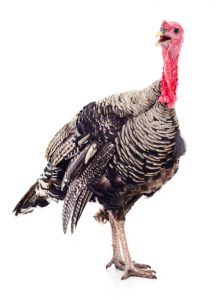Oh yes! The holiday is over and we are back to the hustling and bustling. You must have had dishes overflowing with lots of finger-licking meats alongside chicken and turkey. Simply yummy!
You most likely enjoyed every bit of either the chicken or turkey. But then, how much do you know about these overweight birds? Here are a few facts about them you should check out.
Chickens

1. Chickens have speed
Believe it or not, these birds can run up to 9mph in short bursts, that’s why trying to round them up in a coop can be a little challenging. Their ability to speed off keeps them safe from predators. I guess humans are just too much of a challenge for them. How we love their meat.
2. Chickens have three eyelids
According to Taste Inc. chickens have a third eyelid made from a transparent membrane that opens and closes horizontally, sliding from front to back. It’s located underneath the other two eyelids but acts independently from them. If you pay close attention to a chicken’s eyes, you can spot it. Yeesh.
3. Chickens dream too
There is nothing science won’t tell us. Apparently, chickens, just like other mammals and humans, experience Rapid Eye Movement which indicates they are dreaming. You have to wonder if they’re dreaming about escaping the slaughterhouse or ambushing humans. Who knows?
4. Chickens are omnivores
They eat seeds as well as worms, insects, mice, lizards and some other bigger preys. You can say they are not very picky.
5. Hens’ combs can get bigger
You know that red thing you see on top a Hen’s head? Yeah, that’s the comb. Before they lay eggs, their combs become bigger and turn deep red. Interesting stuff.
Top Flexxzone Picks
- 6 Helpful Liquid-Based Meals For The Weather
- Can You Feel The Harmattan Just Yet?
- Health Scares: When Your Body Plays Games With You
Turkeys

1. Turkey’s beak has a name
The red fleshy bits hanging off turkeys’ beaks are called ‘Snoods’, while the fleshy bits under the neck are called wattles. When a male turkey is strutting, the snood engorges with blood and extends to hang down over the beak.
2. They are easily spooked
They get agitated when they suddenly find themselves in the crowd and run for cover. This is a good tactic in the wild while avoiding predators but in a domestic pen, their piling up frantically can cause those at the bottom to be smothered.
3. They have two stomachs
Like all birds, turkeys don’t have teeth, so they have to enlist some extra help to break down their food. MentalFloss.com stated that each swallowed mouthful goes first into a chamber called a proventriculus, which uses stomach acid to start softening the food. From there, food travels to the gizzard, where specialized muscles smash it into smaller pieces.
4. They sleep in trees
Turkeys know they are easy prey, so the trees serve as a safe haven for them. The hop from branch to branch until they reach a safe distance from the ground and away from predators who are after their deliciousness.
5. They have good vision
Humans can see about 180 degrees, but given the placement of their eyes on the sides of their heads, turkeys can see 270 degrees. They also have better colour vision than we do and can see ultraviolet light.
There you have it. Chickens and Turkeys. What else do you know about these birds?





























Leave a Reply